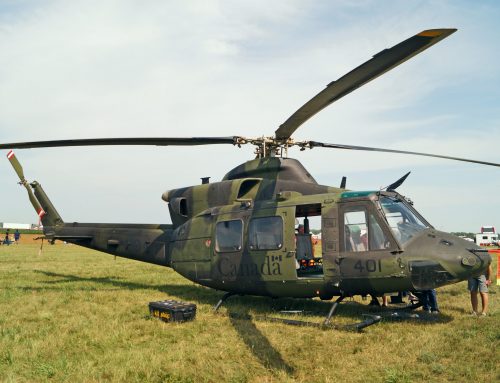IPMS Canada decals and Med blue Spitfire Vb…
Sat Oct 19 21:28:19 2002
The IPMS Canada Canadian Aces decal sheet provides a set of markings for a Spitfire Vb “UF-S” BR301 of 249 Sqn., Malta, 1942. The notes state that this aircraft had the desert scheme overpainted with Dark and Light Mediterranean Blue with Azure Blue undersides.
Any new information about the use of the Med. blues since this topic was discussed here many moons ago? The Med blue scheme has an attraction for me as the same colors were used on some USAAF B-25G’s in the MTO.
I want to use the Tamiya Vb in 1/72 as a quick OOB project using these colors and the Canadian Aces decals.
Any info concerning the paint scheme or the Tamiya Vb much appreciated. Don’t know much about Spitfires.
Bob Swaddling
Here we go again
Sat Oct 19 21:40:31 2002
Hi Don
IIRC this subject has never been nailed down with any definite concrete information. We will soon see a rise of all the speculative colour schemes that for the last few months have been relatively quiet.
I really wish that I could help you by ‘knowing’ the actual colours used on Malta. I actually believe that there were many and they were varied.
I believe that you just stuck the end of the hockey stick in the hornet’s nest, so I will run for cover now.
P.S. – In the end do what ever YOU think is correct and just dare someone to prove that you are wrong.
Don Fenton
Thanks Bob. While we are talking Spitfires…
Sun Oct 20 08:22:56 2002
Thanks for the insight. While we are discussing Spitfires, do you have any comments concerning the Tamiya 1/72 Vb? This kit appears to share some of the attributes of its 1/48 brethren – oddly shaped wing fillet, ovoid wheel well openings and a curious hump backed appearance.
Comments have been posted concerning the shape of the wing in this kit. These lead me to believe that the wing shape is quite poorly represented. Using the data in Ian Huntley’s article “Spitfire Wings” and the drawings in the article as a basis for comparison, the wing does not appear to be that far off. The main problem is in the plan form. The shape appears to be easily correctable by adjusting the leading and trailing edge a little bit. What say you?
Bob Swaddling
Tamiya MK V in 1/72nd scale
Sun Oct 20 16:53:59 2002
Hi Don
I really can’t comment on the 1/72nd scale Tamiya Spitfire kit as I have not seen one yet. See what I mean about stirring the hornet’s nest? I pass on all that.
Graham Boak
Unlikely but?
Sun Oct 20 05:11:53 2002
Until we find a photo of this particular a/c it is difficult even to extrapolate. It was an ex-601 Sqn a/c being operated by 249 Sqn, originally delivered in the desert colours.
249 had a habit of overpainting the whole aircraft, or at least the mid-stone, with a dark blue-grey colour, known (later) to be Extra Dark Sea Grey. However, this cannot have happened on this one or the original codes would have gone too. The mid-stone overpainting was common on other units at this time, but pictures of 601 in this period….?
If I was to paint this aircraft I would choose between a retained desert scheme (most likely) or the mid-stone overpainted with EDSG. Use of Dark Mediterranean Blue as the overpainting colour is possible, but the DMB/LMB colour scheme is an extrapolation of similar use on Albacores and Beauforts. These were so painted when passing through Alexandria MU, which the Spitfires didn’t. Here, I think it a product of limited information and a pinch of creativity.
But information is limited…
Modeldad
Graham..what is you reference for this…
Sun Oct 20 09:24:41 2002
249 had a habit of overpainting the whole aircraft, or at least the mid-stone, with a dark blue-grey colour, known (later) to be Extra Dark Sea Grey. How known to be EDSG?
Graham Boak
Report from Malta War Museum
Sun Oct 20 11:14:13 2002
Apparently a visitor stated that he was a painter on the Beaufighter squadron, and he remembered overpainting the MS with thinned-down EDSG. This was however towards the end of 1942, so cannot be absolute confirmation that the same procedure was carried out earlier. Nor did he specifically state 249.
Certainly 249 had a lot of very dark monotone aircraft – the initial batch were repainted in a colour described as “very dark mixed grey” or as “blue-grey”: higher-quality 1943 photos show a scheme looking very much indeed like the first post-war FAA scheme. This scheme (or schemes) is a darker colour than the blue-grey from the Wasp/Calendar delivery.
Aircraft from several squadrons (249 and 126? 185?) around the July period do have two dark uppersurface colours: Hall Of Fame and Osprey profiles show this as the Dark Earth and a dark blue-grey. Richard Caruana thinks it is the standard desert scheme on ortho film , but this doesn’t hold water.
More information required, surely.
Modeldad
Thanks…
Sun Oct 20 11:45:43 2002
But I am always leery of the memory of “those who painted“. Memory gave us that fictitious “Bell Green” and that Hudson I for the RAF was OD/MG (these colours had not even been developed at the time.. they only existed as water-based temp camo).
But it is another possibility.
Graham Boak
NO: OD goes back to 1922
Sun Oct 20 14:24:12 2002
Medium Green dates to 1940, but Dark Green to 1932. I am surprised how few references to UK/UK deliveries in this period ever even mention the existence of US Dark Green, but we are moving a long way away from Malta!
As the Beaufighter units did have EDSG in use, and the Spitfires did have a dark blue-grey added on Malta but nowhere else, I think it a reasonable assumption. One that could change given more information, but in the lack of such….. A historian has the convenience of being able to sit on the fence, but a modeller has to choose, and would be foolish not to go with the schemes for which have least some evidence. Or else play “what the heck, I’ll paint it what I like”, but in that case why ask questions in the first place?
Modeldad
Because I may just paint it like I want, evidence???
Sun Oct 20 14:45:46 2002
As I said, even in criminal trials, eyewitness evidence is very unreliable. So in the absence of firm data, you are painting what you want, or believe in. Asking the question is just attempting to make the best guess..
Yes, medium green came into use in September 1940, and OD became a permanent color in late ’39. Which means all those Hudsons were in RAF equivalents not substitutes.
Graham Boak
OD was permanent from 1922 to 1964
Sun Oct 20 15:18:39 2002
Sorry, I think that you are confusing different things. OD was established as a permanent colour in 1922, replacing the dark brown khaki. The temporary camouflage colour was Dark Olive Drab 31. To quote Archer “the olive drab colour remained the same as the one which was originally used in 1922 in all subsequent standards until it was finally changed in October 1964.” Note from Archer that OD 22 and OD (AN) are very similar, and lighter than Dark OD 31 or Dark OD 41. OD is present on the porcelain plate standard of 1938, and is present in the discussions (as presented in Archer) of earlier standards in 1933.
Archer does say that it was discontinued as a standard camouflage colour on the aircraft in 1934, but clearly it continued to be available for some other purposes (anti-glare panels, perhaps?) throughout.
So OD, as opposed to Dark OD, was available as one of the standard AAF colours at the time the Hudson 1s were being delivered to the RAF. Medium green is another matter.
I suspect that a lot of the confusion over early war greens on US-supplied aircraft is due to confusion over OD with dark OD, and Medium Green with Dark Green (and, of course, MAP Dark Green.)
As for choice of conflicting schemes, I’ll go for the one with the most evidence available so far. In the lack of firmer data, you go with what you’ve got. Many people have been hung on the basis of witness evidence, which makes this argument picayune. In the end, the difference is probably only over differing shades of blue-grey….
(thanks to Brett Green for permission)





